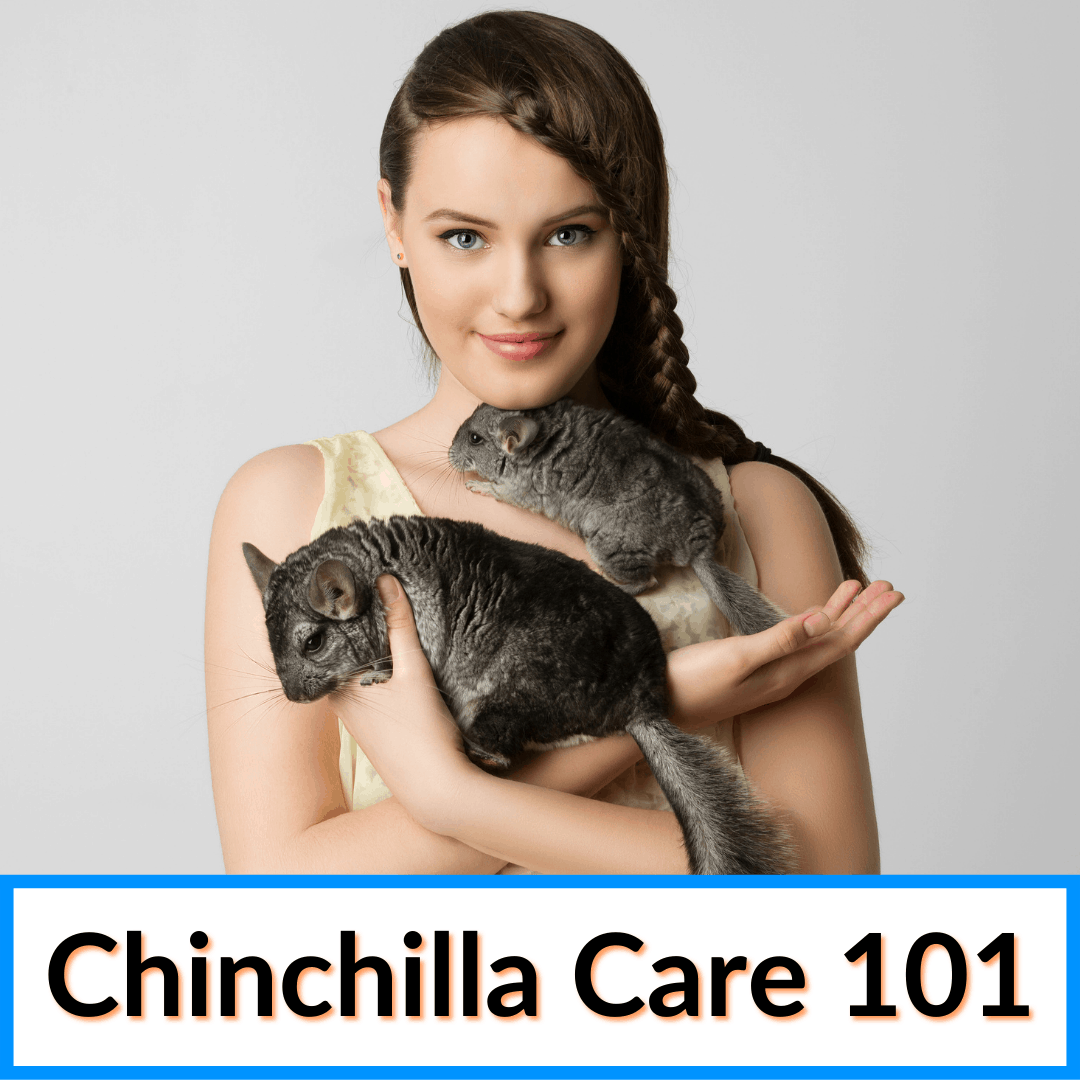
I mean, you are responsible for another life.
Screw up and your pet might die.
The good news is that it’s not hard at all to learn how to take care of a chinchilla.
They are some of the easiest pets to care for. Period.
But you do need to know the basics.
So keep reading to learn chinchilla care 101: the basic info you need to be a great chinchilla parent. You’ll be surprised at how little actual effort it takes.
Contents
- 1 Chinchilla Care Guide
- 1.1 Top 5 Tips For Providing Great Chinchilla Care
- 1.2 Proper Diet And General Nutrition
- 1.3 Plenty Of Fresh Water Is Essential
- 1.4 Habitat And Choosing The Best Chinchilla Cage
- 1.5 Hygiene And Chinchilla Dust Baths
- 1.6 Behavior And Social Interaction With Chinchillas
- 1.7 Proper Handling Is Critical
- 1.8 Caring For Sick Chinchillas
- 1.9 Caring For Pregnant Chinchillas And Babies
- 2 Chinchilla Care 101: Final Thoughts
Chinchilla Care Guide
As stated before, taking care of a chinchilla is a walk in the park once you have a basic understanding of how to meet their most imperative needs.
For the most part, it’s ensuring you provide an adequate and healthy diet, social activity, and ensuring that you can recognize problems when they do arise.
Of course, hygiene and providing dust baths are a crucial part of the equation as well (we will touch on this later in the post)
To kickstart things and to put your mind at ease, I’ll begin with my top tips that will help you provide the best care for your chinchilla.
While the rest of this information in this post is equally important, it really comes down to these 5 tips. These are the areas of care that are the most essential for your new chinchilla.
Top 5 Tips For Providing Great Chinchilla Care
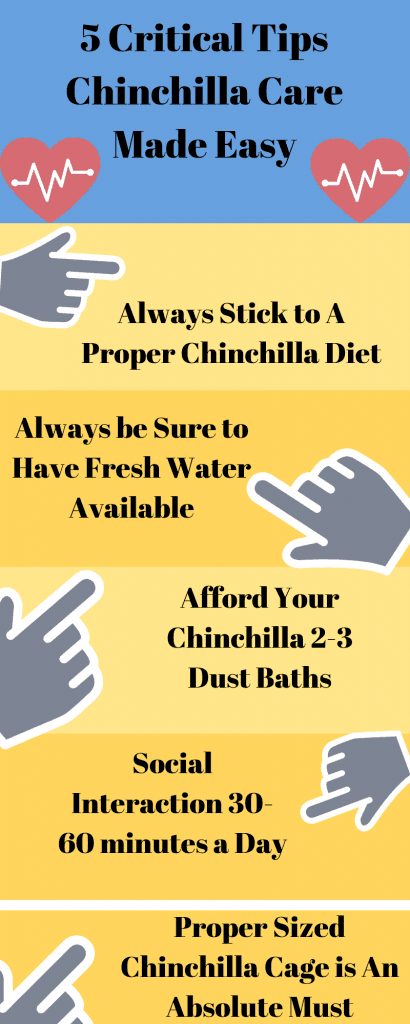
Below are my 5 top chinchilla care tips that you need to be implementing as a chinchilla owner.
All carry heavy importance and are listed in no particular order.
I wanted to start with these tips, because my concern was that I would have readers who bail on the page before at least getting a small nugget of information to implement.
I still fully encourage reading this entire post.
In case you planned to skip town, here are my top 5 chinchilla care tips.
- Provide the proper diet (chinchilla pellets and timothy hay)
- Ensure your chinchilla always has fresh water available
- Provide a proper sized chinchilla cage and clean it routinely
- Provide 2 – 3 dust baths per week at a minimum
- Allow social interaction for 30 – 60 minutes every day
I know. Crazy!
I was able, to sum up, chinchilla care in only 5 tips.
In all honesty, these 5 tips are just about all you need to get the job done, but I do need to explain more details.
That’s what the rest of this post is about, so let’s get into the nitty-gritty details now. If you prefer a video, here is a quick one summarizing everything. I still recommend reading the rest of the article, because it does have a lot more details.
Proper Diet And General Nutrition
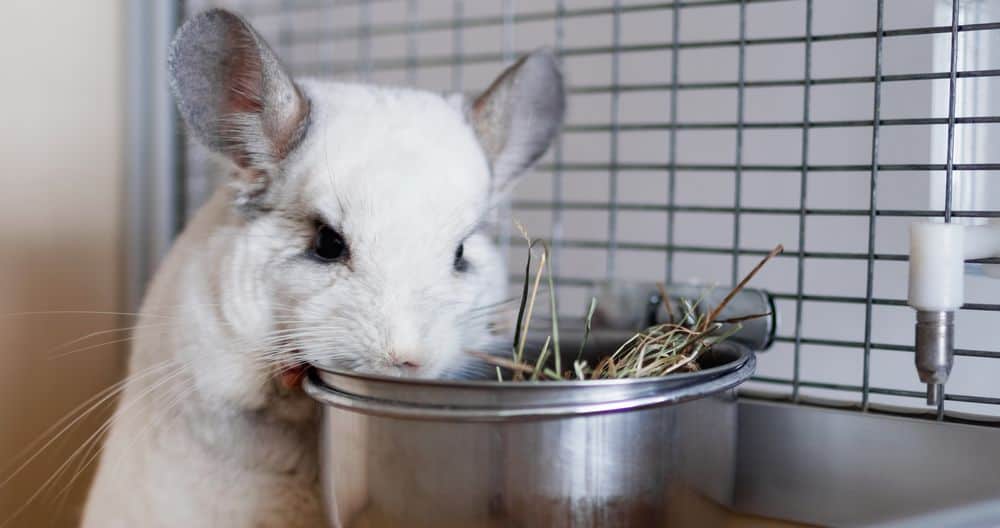
The right food and proper nutrition are critical to your chinchilla’s health and well-being.
You want to ensure that you are primarily only feeding your chinchilla specially formulated chinchilla pellets.
You also need to ensure that you aren’t trusting just any brand that has a picture of a rodent on it. Get pellets specifically formulated for chinchillas. You can find them just about anywhere: Amazon, Chewy, or even Petco.
Stick to the correct pellets.
In addition to the chinchilla pellets, you need to ensure you are offering your chinchilla timothy hay daily as well.
Fresh is preferred and your chinchilla may even let you know by throwing the day-old hay out of the cage or removing it from the hay holder that’s attached to the cage.
The biggest mistake owners make is offering too many treats, or treats that they shouldn’t be. The occasional (chin safe) treat is ok. But you pet should most eat only pellets and hay.
Many owners like to reward their chins with fruit. But most fruit is not safe for them. I have an entire post that discusses which fruits are permissible for treats. You can read that post here.
Proper Weight And Limiting Treats
You may find this odd, but it’s easy to ensure you are keeping your chinchilla at the proper weight. You can do this using a scale and simply placing your chinchilla on the scale every month or so.
Chinchillas need to be at a specific weight to be in the healthy zone. You can see my post about how much chinchillas should weigh here.
It will break down the specifics and walk you through the steps, so we can continue pushing forward through this post.
Again, it’s important before moving on too quickly that you understand that treats should be exactly what they sound like. A “treat” or something special that is only offered on special occasions, and not every day.
Too much sugar and other nutritional imbalances can cause digestive issues and stomach issues with your chin.
If you need more information about which treats you should be offering your chinchilla, you can view my post here.
Plenty Of Fresh Water Is Essential
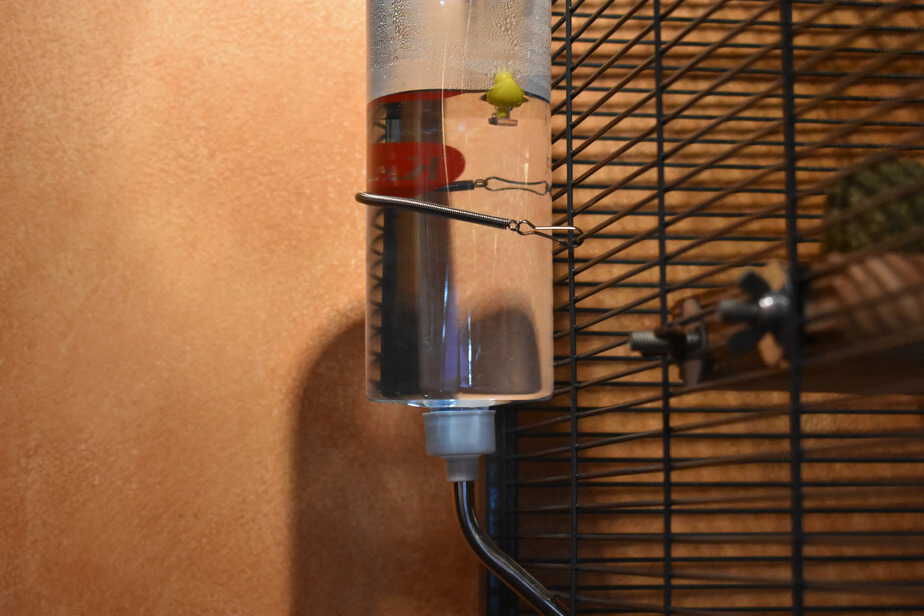
In addition to the correct foods, your chinchilla also needs a constant supply of fresh water, just like any other animal.
Typically, my chinchilla takes about 4 to 6 days to go through a full water bottle. I always try to top off the water bottle when it’s around half-full.
Ensure that you always clean your chinchilla’s water bottle to eliminate bacterial growth and other potential issues from showing their face.
And don’t use bowls for your chinchilla’s water. Use water bottles only.
Keep the water bottle full and even consider having a backup water bottle attached to the cage at all times.
This is especially important to help ensure your chinchilla never reaches the point of dehydration, which can become deadly in a hurry for these small animals.
To be 100% safe, I have written a post about how to tell if your chinchilla is dehydrated.
The biggest tip that makes it easy to tell if your chinchilla may be dehydrated is to visually inspect its ears. Dehydration and overheating are common reasons for a chinchilla’s ears to turn red.
This can happen on the inside or the outside of the ears. It is usually easy to notice, depending on the color of your chinchilla.
Up next is an equally important consideration: the chinchilla cage.
Habitat And Choosing The Best Chinchilla Cage
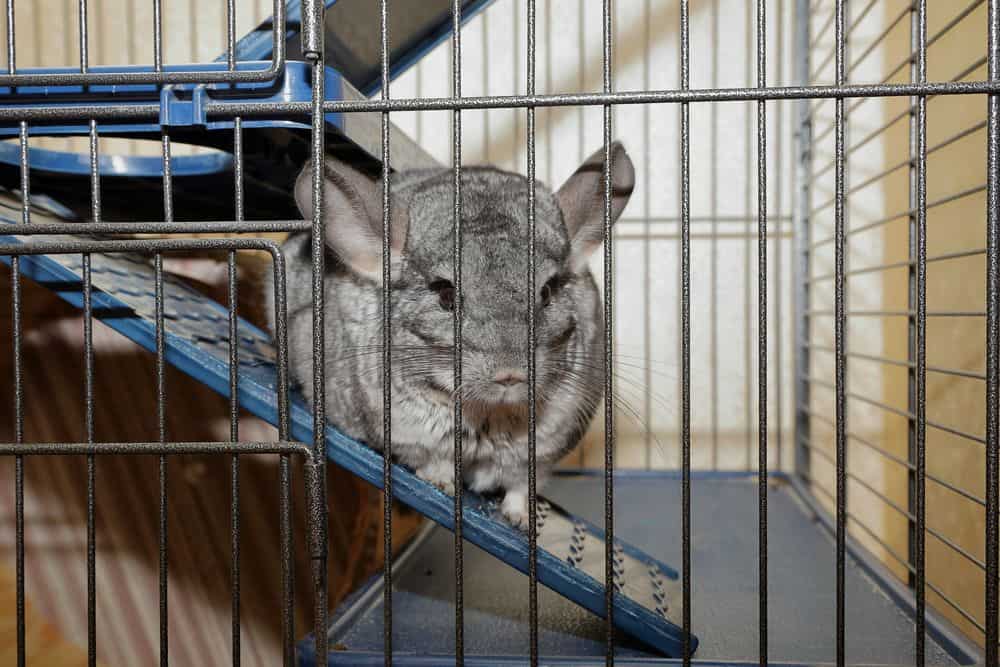
We know how important a chinchilla’s diet and fresh water is, but the habitat comes in as a close second place when it comes to importance.
Chinchillas absolutely must have a proper sized cage to live in.
It’s critical to allowing your chinchilla to exhibit its natural behaviors which include a great deal of jumping and a great deal of climbing.
Plenty of shelves and other items are also critical inside the cage but nothing is more important than ensuring you have a cage that’s the proper size.
Cage Size Matters
The size of the cage matters greatly. The cage needs to be tall enough, wide enough, and even deep enough so you can fit all the items your chinchilla needs inside.
This includes a hiding box, hanging chew toys, bridges, ledges, and even a chinchilla hammock to relax and take a nice nap.
You can view my post about choosing the safest and best chinchilla hammocks here.
I’m going to direct you to my blog post about how to pick a chinchilla cage and my top picks. I use the #1 pick myself and love it. So does my chin. You can see my rundown of the best chinchilla cages here.
If you don’t feel like checking out that post, you can save some time and go straight to my recommendation for the best chinchilla cage (also the one I use).
It is the The Critter Nation 2 Dual Level cage. You can read my review of the Critter Nation cage here.
However, for those of you who need options, refer back to the post mentioned previously that gives you my top 3 recommendations.
I’ve purchased each of these cages in that post to review them, so I can best inform you and my other readers. The post linked to above covers those details to ensure you get the correct cage from the beginning.
Assuming you have the proper cage, and everything is looking good so far, it’s still important to ensure you keep that cage and habitat clean. Those are the details we are going to cover next, so stick around.
Keep The Cage Clean For Your Chinchilla
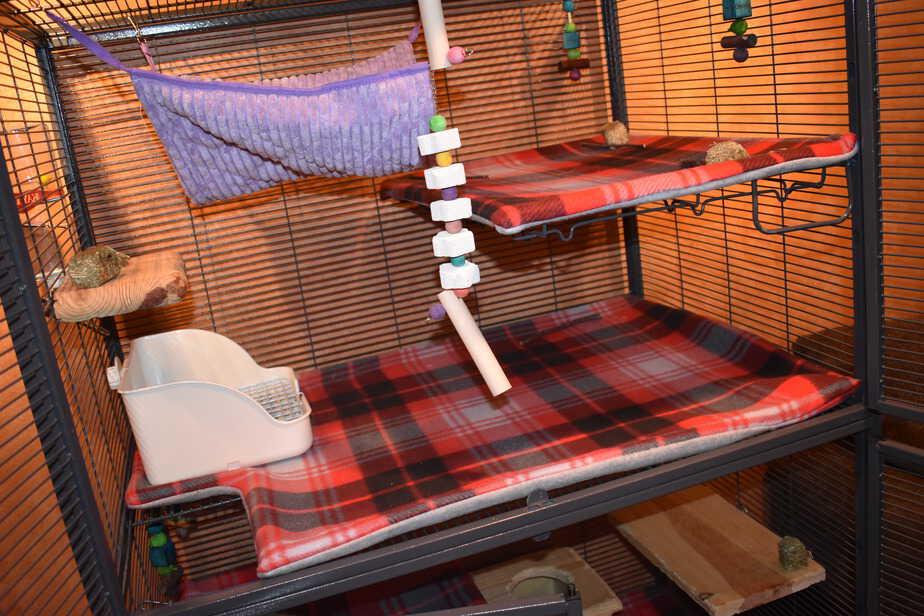
Now comes the fun part. The actual work behind owning a chinchilla. Hey, it can’t be all fun in the sun all the time.
Trust me.
You need to be diligent about cleaning the cage often enough to ensure your pet never has to live in filth. I won’t break down the entire process in this post but that’s the most significant factor.
Simply clean the cage at least once a week and keep up on sweeping the poop nuggets out daily and this will be an easy task for you.
The link previously mentioned above about the frequency you should be cleaning a chinchilla cage will explain the rest of the process to you in-depth.
Ideal Temperatures Are Vital
This is equally as important as always making sure that your chinchilla has plenty of water. Due to a chinchilla’s dense fur, it is easy for your chinchilla to overheat.
Temperatures are a huge consideration that you must take seriously.
I have a post about the specific temperatures and how to keep your chinchilla at ideal temperatures. Not following these guidelines can cause issues such as your chinchilla suffering from heatstroke.
This could lead to seizures, for example. Read more about chinchillas and seizures here, and about nose twitching in chinchillas here, since this is a common sign of a seizure.
There is also no need to put clothes on your chinchilla. If you provide the right temperature, its fur will keep it comfortable. Can chinchillas wear clothes if you want to put them in an outfit to look cute? Clothes can cause all sorts of problems. Just don’t.
Outside Living Is Not An Option For Chinchillas
The last consideration that I see come up often online is choosing the correct location for your chinchilla cage. In other words: where your pet will physically reside at your home.
If your chinchilla is kept indoors with humidity and climate-controlled settings, you will be fine.
Under no circumstances can your chinchilla live outside. It’s not safe and a recipe for disaster.
The chances of overheating are too high. Other factors could also impact your chinchilla’s health when living outdoors, or even within a garage or a shed.
Don’t do this under any circumstances.
Additionally, your chinchilla should not be kept in direct sunlight. It also needs to be somewhere where it can be somewhat isolated from other pets in the home.
When in the cage, this isn’t as big of a concern. But when out for playtime, it’s imperative you don’t have other pets or animals around.
Unless you have tested this in a safe way, your chinchilla doesn’t need to be interacting with your dog.
Well, we have food and nutrition taken care of. We also know where to keep our chinchillas for safety.
Now we need to keep our chinchilla clean and that fur as soft as can be. Here’s the scoop on how to accomplish this with ease.
Hygiene And Chinchilla Dust Baths
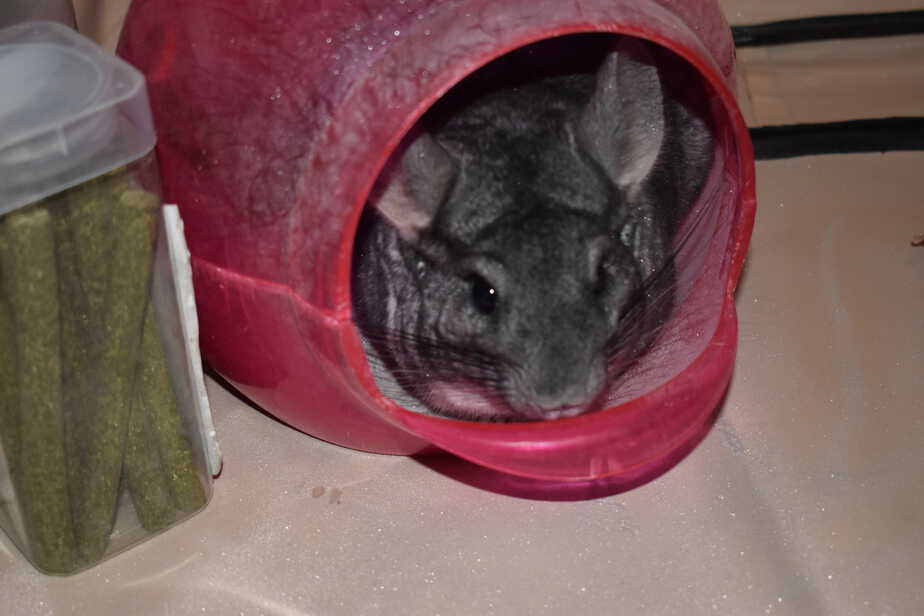
Chinchilla hygiene is critical as well. That fur is beautiful and soft, but it won’t remain that way without proper care.
The great news is that it doesn’t make much to accomplish this. A dust bath with the correct chinchilla dust is about all that’s necessary.
Outside of this, your chinchilla will self-groom when needed. For the full details on these processes, be sure to check out my post on how to wash a chinchilla, which you don’t actually do at all.
Confused? Read the post.
It will break down every possible angle and situation, and give you a step by step guide to making sure your chinchilla remains in tip-top shape. You can learn how to give a chinchilla a dust bath here.
Dust Bath Frequency And Building A Routine
You will find this information in the post I just referenced a moment ago, but I was worried you wouldn’t go read that post so I wanted to re-cap one important factor here.
Please, always ensure that you are offering your chinchilla a dust bath at least 2-3 times per week. They love dust baths and it allows them to remain clean while doing what they do in the wild.
It’s the best practice for maintaining chinchilla hygiene while keeping your chinchilla happy.
No Worries About Fleas Or Allergies
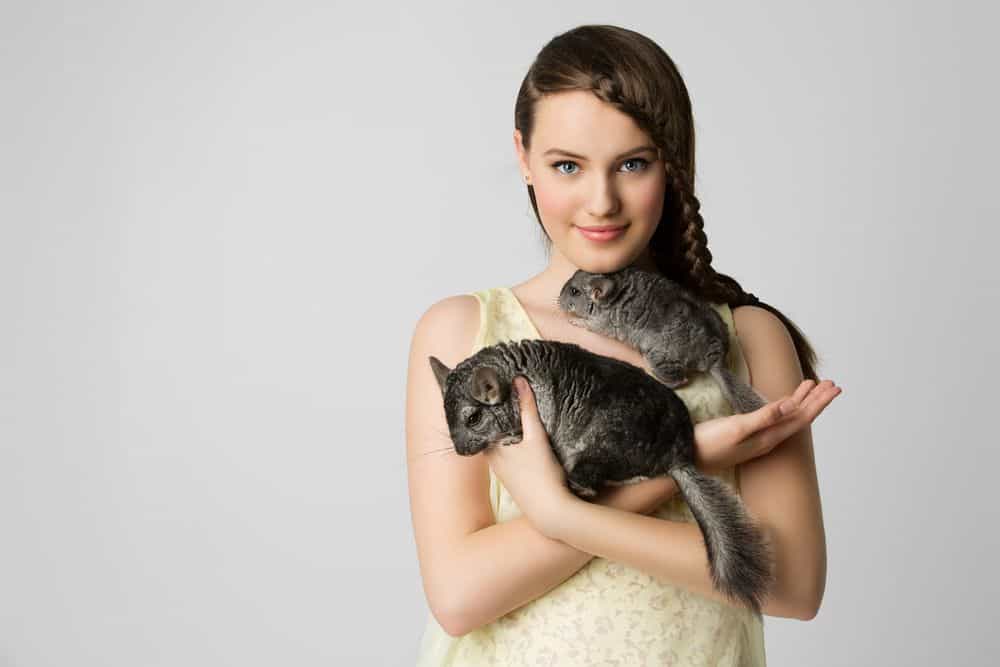
This is when owning a chinchilla can have some really nice benefits. Chinchillas are not going to over-activate those allergies.
Dust and dander are at a minimum with these pets. If you have allergies frequently or around other animals, this won’t be an issue. Chinchillas are very allergy-friendly animals.
Additionally, it’s a nice relief to know that you have adopted an animal with a fur too dense to allow fleas to enjoy feasting inside of their fur and on their skin. Chinchillas almost never get fleas.
Their fur is much too dense for this to happen.
I’ve owned a dog my entire life and the ability to raise an interactive and social animal that doesn’t have some of these common pet issues is a very nice relief, to say the least.
Now it’s time to get into some other factors that go into caring for a chinchilla. Specifically, let’s look at their personality traits and social behaviors. Here’s everything you need to know.
Behavior And Social Interaction With Chinchillas
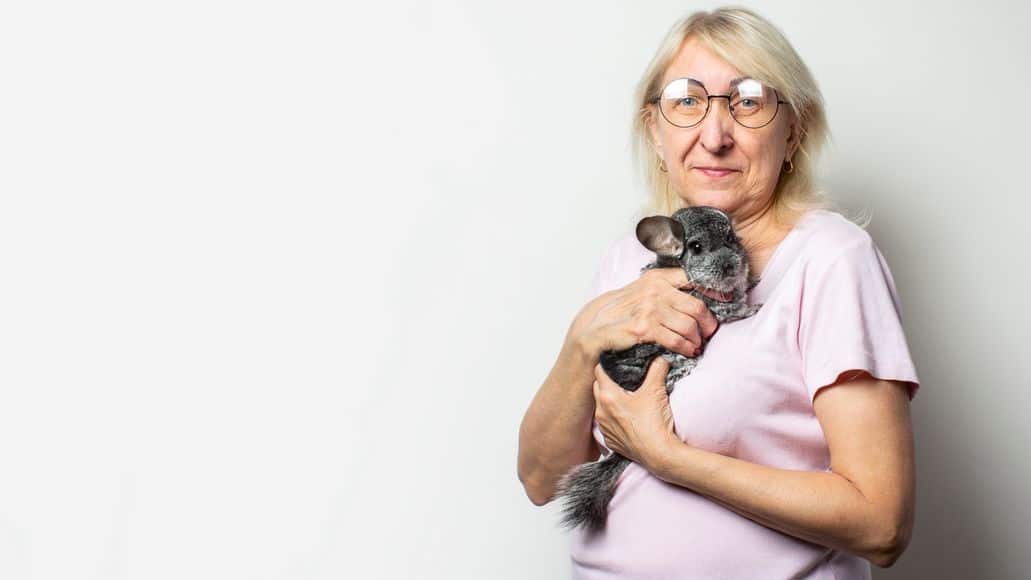
Chinchillas are extremely social creatures and it’s important to recognize some common behaviors your chinchilla will display.
Not only are they social but they crave this interaction with you. And also with other chinchillas in some circumstances.
It’s important that you realize this and spend a certain amount of time with your chinchilla each day.
No interaction with your chinchilla can cause it to become restless and perhaps even destructive within its cage. It could also cause your chinchilla to become depressed, which brings many other issues with it.
Plus, it just doesn’t create a healthy relationship between you and your pet going forward. It’s much better to attempt to build a bond with your chinchilla by interacting with it regularly. Do chinchillas need a lot of attention? Let’s find out.
A Quick Guide On Building A Bond With Your Chinchilla
The good news is that you don’t have to do much to build a bond. And you can see a marked improvement after just a few short weeks.
Here’s what you need to do to bond with your chinchilla.
Allocate 30 to 60 minutes per day to interact with your chinchilla. During this time, allow it out of the cage to roam a bit. Maybe spend some time playing with it. This doesn’t just satisfy the need for social interaction, but also the need for chinchilla exercise.
If you simply don’t have the time to do this, there is another option. You can get your chin a little friend. But pairing your chinchilla is not as easy as just buying a second one.
Pairing Chinchillas
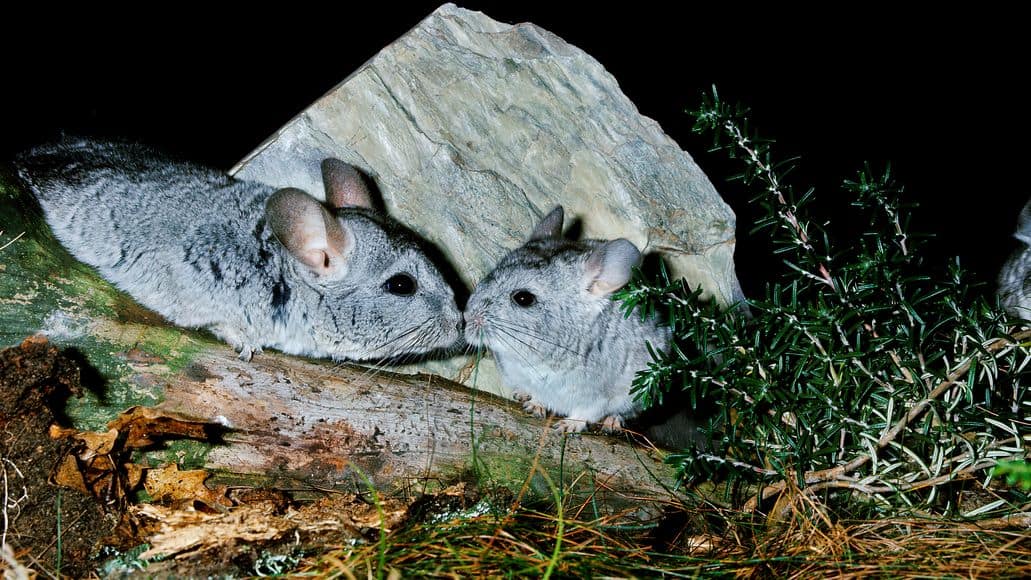
If you weren’t aware, chinchillas run in packs (or herds) of more than 100 in the wild. Clearly, unless you have a very large garage and a huge budget, you probably won’t be adopting 100 chinchillas anytime soon.
That doesn’t mean you can’t adopt a second chinchilla. Or get two chinchillas right out of the gate on day one.
The bad news is that pairing is not always so simple with domestic chinchillas.
Domestic chinchillas love to interact with one another, but that doesn’t mean they pair immediately. And often it’s actually better to keep them in separate cages that are near each other.
But this isn’t always the case.
If you pair them correctly and they seem to be getting along, you can probably have two chinchillas in the same cage.
Chinchillas can get violent with each other from time to time, so it’s imperative to pay attention and be ready for that scenario. I have a post that helps detail this in more depth for you.
It’s all about if chinchillas do better in pairs. I also have a guide on how to bond chinchillas.
But owning two chinchillas is definitely not necessary. As long as you spend some quality time with your single chin every day, it will be happy and healthy.
I have a post discussing if chinchillas can be alone for more information.
Proper Handling Is Critical
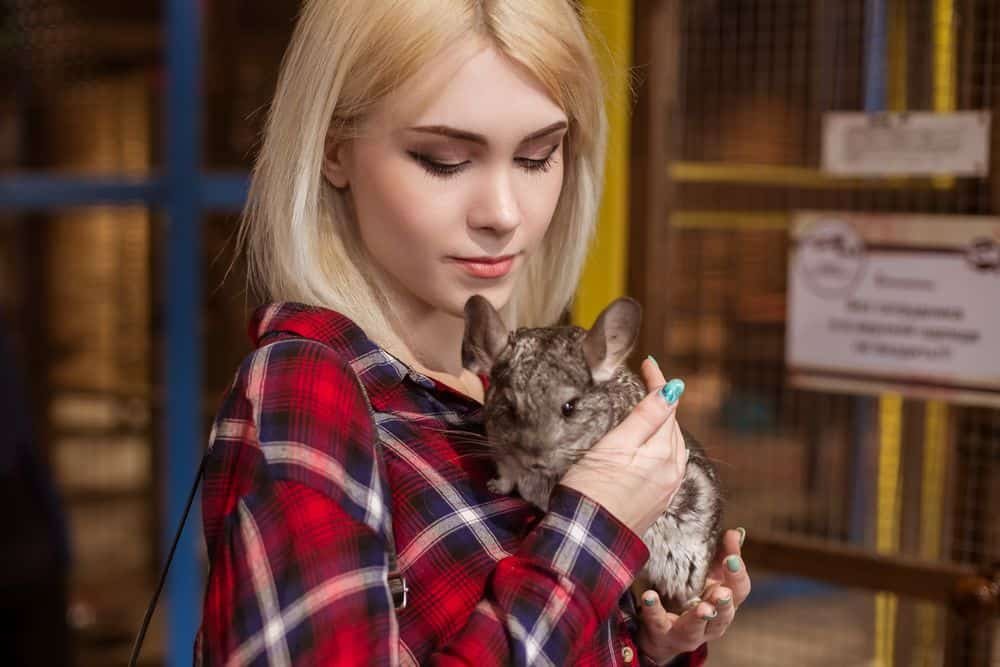
Proper handling is also crucial with chinchillas. This will help avoid injury and make your chinchilla feel safe.
If you don’t handle your chinchilla correctly, it will feel insecure in your arms and will attempt to jump or run away from your grasp.
Not understanding the proper handling skills can also make it very difficult to catch your chinchilla when you need to hold it or return it to its cage. An easy method to use is the “base of the tail technique”.
The sooner you can learn to handle and hold your chinchilla properly, the sooner your chinchilla will feel safe with you and be more open to you holding it and having your much-desired cuddle sessions.
Don’t worry about grabbing your chinchilla by the base of the tail either. The tail can handle it and will not fall off.
You can view my post about how to get your chinchilla to enjoy being held here. You can learn how to get a chinchilla in and out of the cage properly here. I also have an article on different ways to restrain a chinchilla here. You should never use a collar or harness, for example.
And once you are ready, read my article on whether it is possible to train a chinchilla. It’s not a simple yes or no question.
Caring For Sick Chinchillas
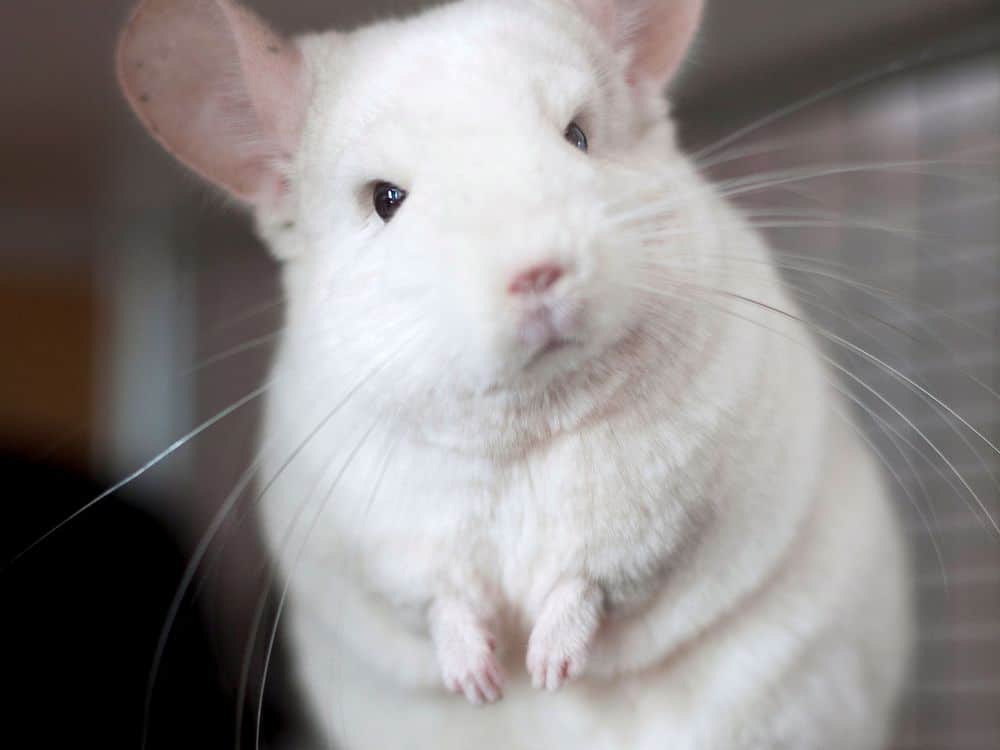
With proper care and the correct diet, hopefully you don’t run across this issue very often. Nonetheless, illness does happen and there isn’t much you can do about.
The key is trying to avoid it as much as possible. Because some illnesses are preventable.
There are generally only two factors that cause preventable illness in your chinchilla, at least most of the time. They are:
- Digestive issues
- Dental issues
To avoid digestive issues, it’s best to stick to chinchilla formulate pellets and timothy hay, and always limit the number of treats you provide your chinchilla on a regular basis. We’ve already covered this.
Additionally, never place harmful items in your chinchilla cage that they could eat and cause further concerns to arise.
Dental Care Is Critical
Overgrown teeth are an issue with chinchillas. One of the best ways to avoid this is to always have plenty of items inside of the cage for your chinchilla to chew.
A chinchilla’s teeth can grow up 2 to 4 inches per year.
If their teeth get too long and they don’t chew or file them down, they can begin to catch or puncture the flesh inside of the chinchilla’s mouth causing injury, illness, infection, and of course pain.
Recognizing Illness
While these are the common injuries and illnesses you may face, you still must be able to recognize if some other problem is occurring with your chinchilla.
For tooth issues, you can often spot the problem early by noticing watery eyes, rubbing at the mouth, drooling, and avoiding eating.
Pay attention to certain signs such as teeth grinding. I have a post that you can read that explains why chinchillas grind their teeth.
It will help to give you an understanding of when you have an issue with your chinchillas’ teeth and when it’s likely nothing to worry about.
Call The Vet When Necessary
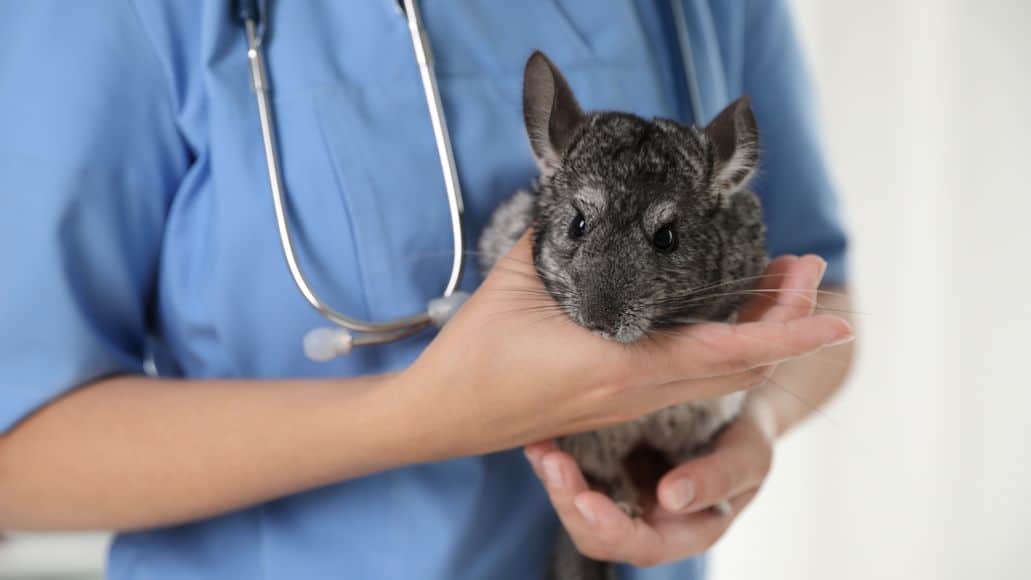
You can’t always rely on yourself to fix the issues and need to recognize when you need to call a vet to take care of issues when they occur.
The pain and future issues any type of illness can cause is not something to leave un-noticed and only a professional can help.
Additionally, you need to make sure that it’s a vet that’s qualified to work with chinchillas or has knowledge of chinchillas.
Not all vets have this background and may not be as big of a help as you may have hoped.
Do your homework ahead of time to avoid the hassle and scramble when an issue does occur down the road.
Caring For Pregnant Chinchillas And Babies
Pregnant chinchillas are also a consideration to keep in mind. Especially if you are considering breeding chinchillas or looking forward to some baby chinchillas in the future.
Pregnant chinchillas, for the most part, don’t need much special care. But if you have paired chinchillas, you need to isolate the pregnant mother chin.
Male chinchillas may not recognize that the female is carrying babies and still attempt some freaky business.
It’s best for the mother and the baby chinchilla’s safety and wellbeing to ensure that you isolate your chin and keep tabs on its behavior and health during the long 110-day gestation period.
Newborn Or Baby Chinchillas
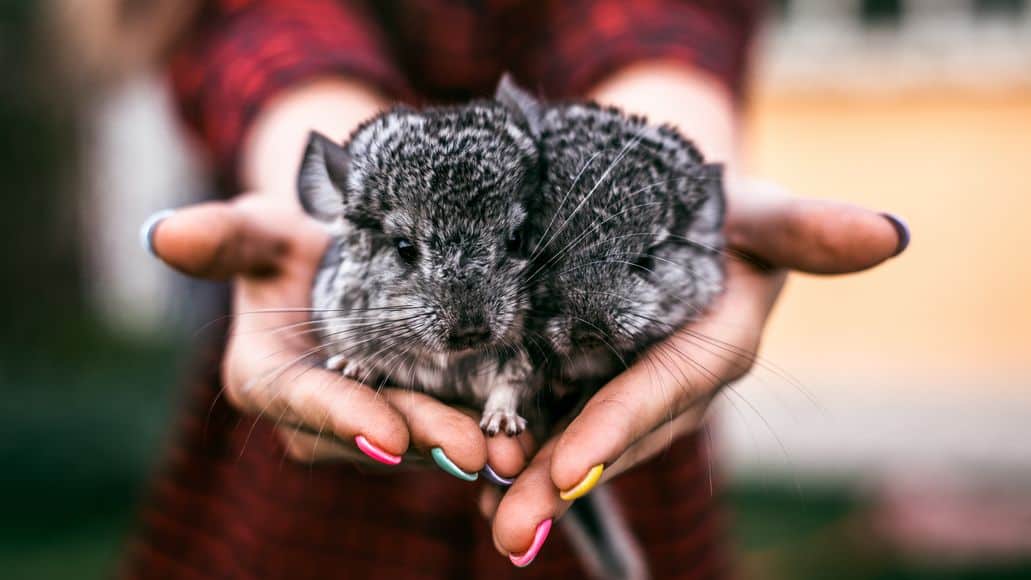
Caring for newborn chinchillas is a bit more involved then we will touch on this post. However, I can tell you that newborn chinchillas are just as energetic, happy, and fun to be around as adults
Newborn chinchillas need time to get nutrition from the mother chinchilla. This lasts for 6 to 8 weeks following the birth.
It’s also smart to use a wooden box or separate spaces for each baby chinchilla within the cage with the mother, due to their small feet that can get caught on cage bars or even cage items.
If the mother is present, you will be able to allow the mother to provide nutrition to the newborns.
However, if you are dealing with orphaned chinchillas, you may have to supplement their nutrition with something such as warm kitten milk.
Also, ensure you are tracking your newborn chins’ weight on a scale, to ensure they are growing at the appropriate pace.
In 2 to 3 weeks, you can begin offering orphaned baby chinchillas chinchilla pellets.
Again, if the mom is present you can use the mother for nutrition for a longer period and that’s the healthiest approach to take to ensure your baby chinchillas grow up healthy and strong.
Chinchilla Care 101: Final Thoughts
This post was a bit long-winded, but having a full chinchilla care 101 guide is imperative for your ability to take care of your chinchilla properly moving forward.
It’s a walk in the park once you get a feel for your chinchillas’ behavior and how they interact with you as the owner.
Remember before the post began and hit full speed?
I was able, to sum up, how easy chinchillas are to care for in 5 tips.
In all reality, those 5 tips are a bulk of the workload, and following these tips can go a long way towards making sure your chinchilla is happy and healthy. You can also find a few more tips in my article on how to calm a chinchilla down.
Share your thoughts and advice on how to take care of a chinchilla.
As always, I love to get my readers to provide feedback on the topic.
What additional chinchilla care tips do you have to add to this list?
What do you recommend to other readers to ensure they are providing the best options and learning how to take care of their chinchillas in the best fashion?
Be sure to share your stories and drop a comment below.
“Chili” and I appreciate you stopping by and will catch you next time.
sorry I am to young to give my name yet says
my mom will only let me get a chinchilla if I can tell her where the chinchilla will stay if we’re on vacation,
any tips?
chin chillin says
can a friend take care of it or you could leave it for a week end with enough water and food.
Josh Martin says
If it is only for the few weekend days, you would be okay.
Food, water, and proper temps must be certain.
Anything over a weekend, I’d have a friend check in on your chin.
Thanks for stopping by and reading.